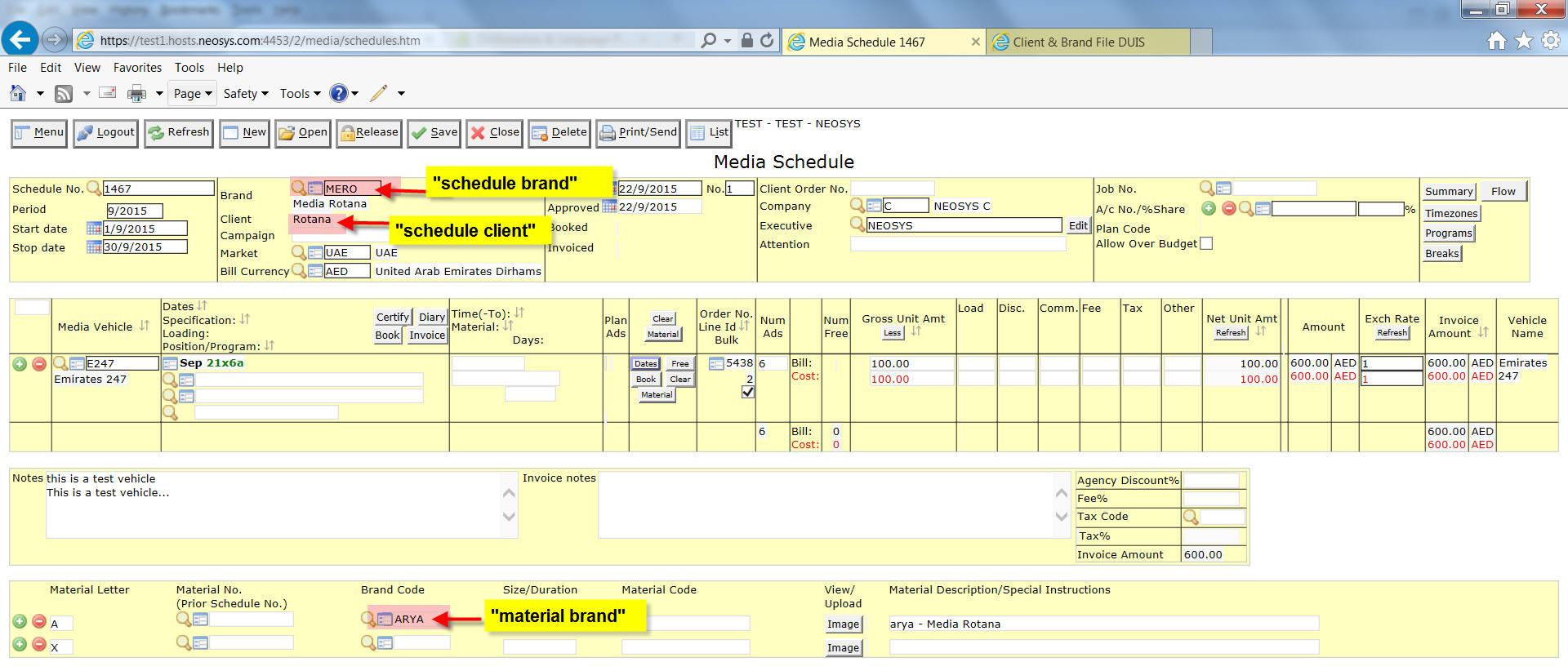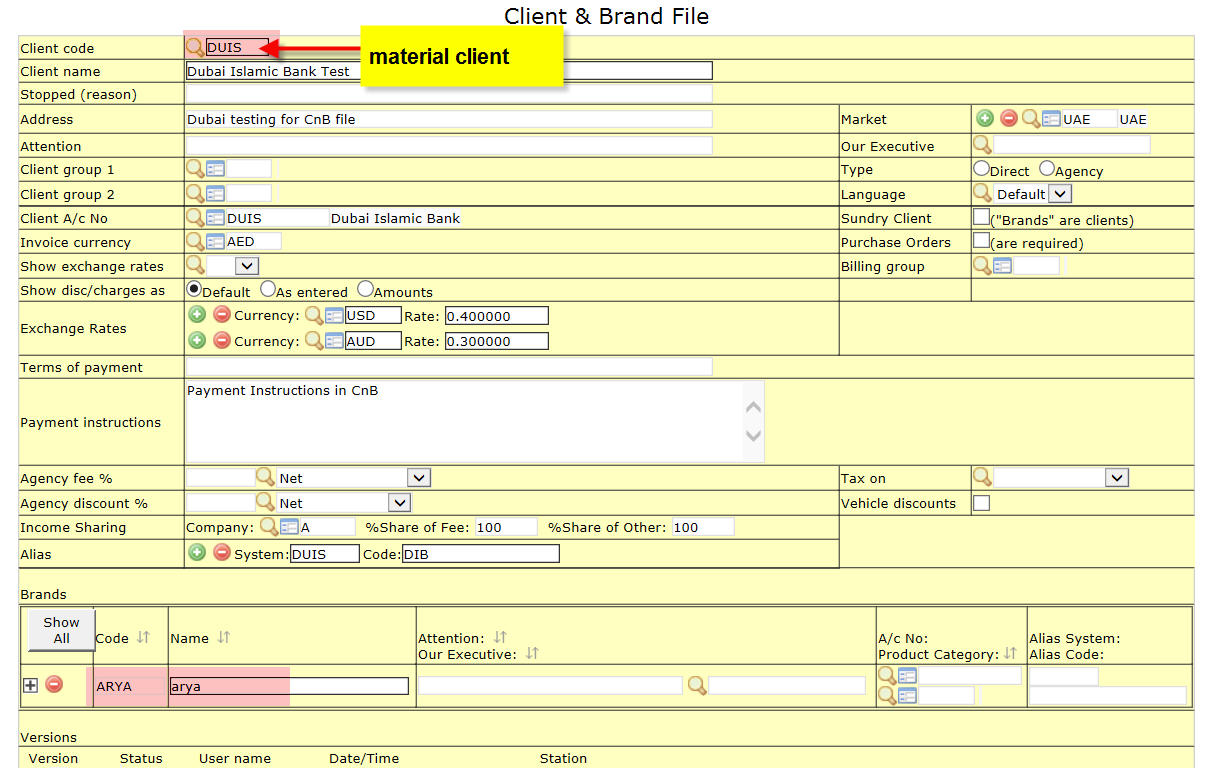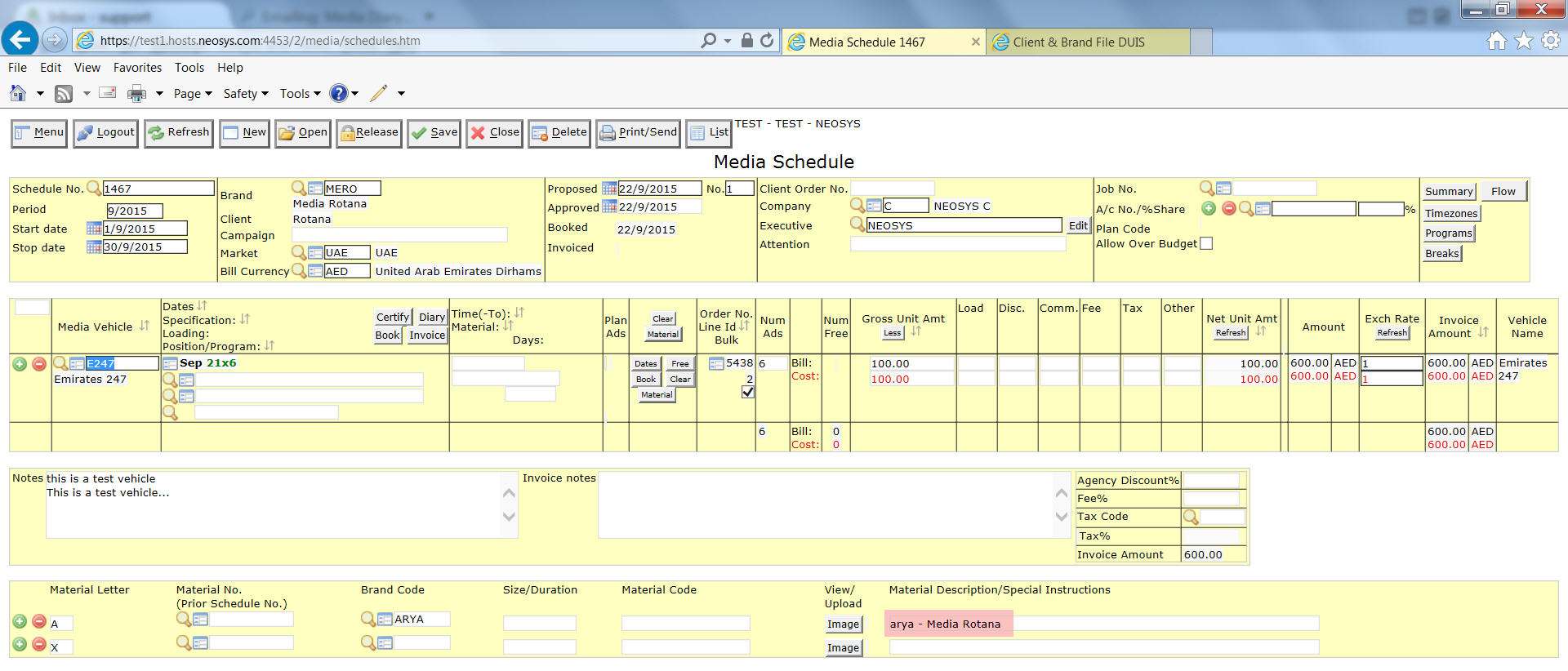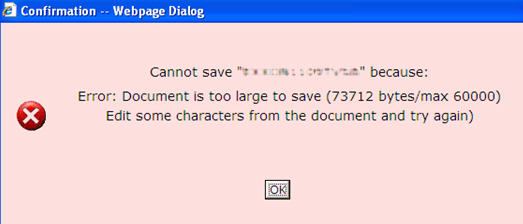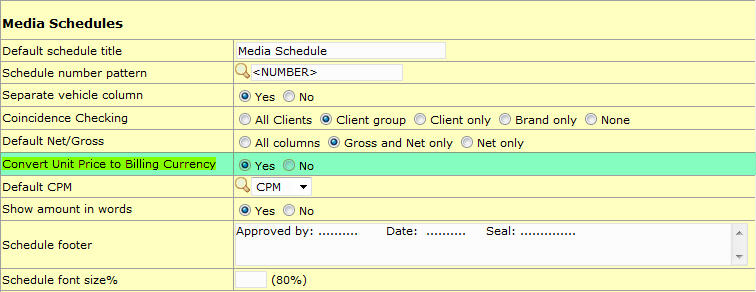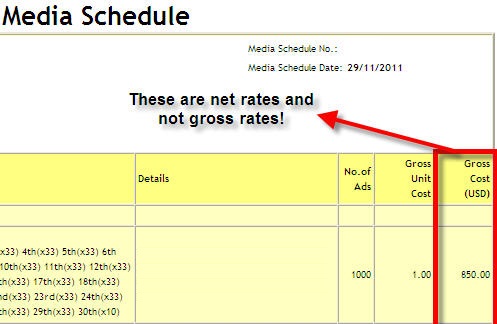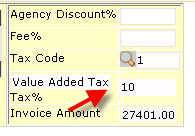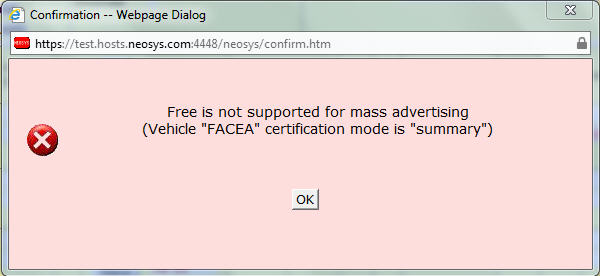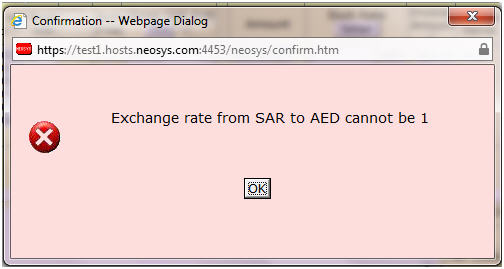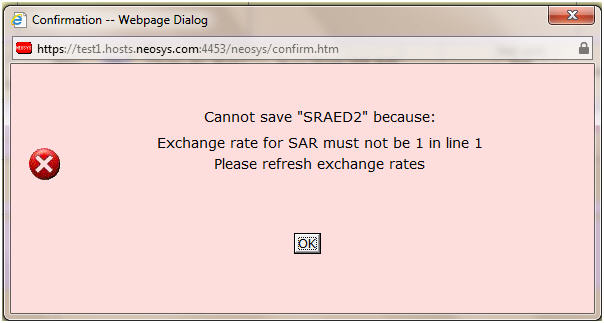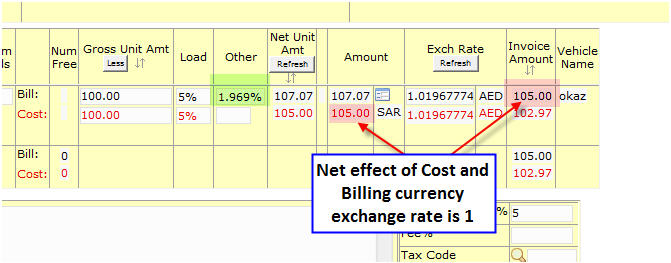Troubleshooting NEOSYS Media System: Difference between revisions
No edit summary |
|||
| (68 intermediate revisions by 12 users not shown) | |||
| Line 1: | Line 1: | ||
== | == Correcting order of ads in media diary == | ||
After changing any reference files like clients, suppliers and media vehicles the order of ads may be incorrect. | |||
For example changing the supplier of a vehicle may result in a media diary ordered by vehicle to incorrectly show ads from one vehicle in two separate places in the report instead of together. | |||
The solution is to [http://techwiki.neosys.com/index.php/Troubleshooting_NEOSYS_Media_System#Run_CREATEADS| Run CREATEADS] program in maintenance mode. | |||
== Details missing in Media Diary or Changes in Files does not reflect in Media Diary == | |||
Unusually for NEOSYS, in the ADS file (on which the media diary and all "List of Ads" type reports and files are based) lots of referential information (like client/supplier/cost etc) is frozen at the point of the last update. [http://techwiki.neosys.com/index.php/Troubleshooting_NEOSYS_Media_System#Run_CREATEADS| Run CREATEADS], it rebuilds the ads file and therefore gets/stores the latest client, supplier, cost etc info into the ad records. Moving brands between clients and vehicles between suppliers is rare. | |||
This process can take a long time on a large database and requires all users/neosys processes of the database which requires fixing, to be shut down. When you run CREATEADS, it asks you to confirm a year from when to run this task. CREATEADS will recreate ads from the year entered to the current year. Ads in any period before the input period will not show in any Media Diary Reports. Eg.if you input 2006, then you cannot generate a Media Diary for 2005 or any year backwards. | |||
In most other files, NEOSYS only stores the main codes like brand code and vehicle code and every time a report needs the client or supplier code it looks up that information from the separate brand or vehicle file so it always gets the latest info. This is how databases usually work. Actually some people would like the reports based on the ORIGINAL codes rather than the latest codes. | |||
Please see [[Media_FAQ#Why_is_the_Media_Diary_Report_showing_unexpected_results.3F| Unexpected Media Diary Report]] for further information. | |||
== Ads are missing from Some but not All Media Diary and/or related Reports/Screens or you get some errors like "The ad has not been booked. Are you sure that you want to certify this ad?" == | |||
Cause: Possibly caused by user action | |||
Explanation:May be user have changed the dates on the calendar and selected to '''NOT rebook the changes'''. Then the ads on the new dates would NOT have booking order numbers. | |||
It can be checked by inspecting the List of Booking Orders to find the time and date that the booking order was created and the time and date of all schedules file modifications. | |||
Please see [[Media_FAQ#Why_is_the_Media_Diary_Report_showing_unexpected_results.3F| Unexpected Media Diary Report]] for further information. | |||
Cause: System error - possible an unresolved NEOSYS software error | |||
Solution :- [http://techwiki.neosys.com/index.php/Troubleshooting_NEOSYS_Media_System#Run_CREATEADS| Run CREATEADS] | |||
[[Fixing wrong exchange rates in invoices]] | [[Fixing wrong exchange rates in invoices]] | ||
== Ad missing from Media Diary report if only one ad expected to show == | |||
If only one ad matches the filter criteria entered in the Media Diary page, then the output Media Diary report will not show as expected if the Summary filter is chosen as "Subtotals with drilldown to details" or "Subtotals only" in the Media Diary settings. The report will appear as below if there is only one ad to show. There is no fix for this yet. | |||
[[image:mediadiary11.jpg]] | |||
Choose "Details and subtotals" option in Summary filter in order to view the ad details. | |||
== Ads are missing from media diary reports when filtering using schedule client or brand although ads are actually present in the schedule == | |||
=== Cause=== | |||
The missing ads are linked to a material which in turn is linked to another brand (not the brand used in the schedule) using the "material-section" at the bottom of the schedule, as shown below: | |||
[[File:Scheduleadswithmaterial.jpg|800px]] | |||
After these ads were saved in the schedule, the "material brand" was moved to another client ("material client") | |||
[[File:Materialclient.jpg |800px]] | |||
=== Explanation=== | |||
Ads in media diary reports are analysed under "material client" not the "schedule client". This is why the ads are missing in the media diary report when filtered by "schedule brand" or "schedule client". | |||
Look at the material description of the material used in the schedule. By default, the system puts into the description the client name of "material brand" "as-at" the time the schedule was saved (demonstrated in below picture). This acts as a clue to clear confusion if later the brand is moved to another client. | |||
[[File:Material description.jpg|800px]] | |||
==[[Media_FAQ#How_do_I_enter_Loading_such_that_a_portion_of_it_is_not_shown_to_the_client.3F|Why are certain Loading details missing in the Schedule Printout/ Invoice/ Cost Plan/ Media Plan?]]== | |||
== Removing unnecessary items from List of Schedules Pending Invoices == | |||
Sometimes, schedules which don't need invoicing appear on the List of Schedules Pending Invoicing. This occurs if you do the following: | |||
# Invoice the schedule. NEOSYS removes it from the pending invoicing list. | |||
# Modify the schedule. NEOSYS puts it back onto the pending invoicing list. | |||
# Modify the schedule back to as it was invoiced in. NEOSYS *doesn't* remove it from the pending invoicing list. | |||
===Solution=== | |||
The solution is to try issue a proforma invoice for the schedule (make sure to select "All Ads" under the Certified/All options, in the invoice options page). | |||
This will give you a "nothing to invoice" message and remove it from the list of schedules pending invoicing. | |||
Asking for a proforma instead of an invoice is a precaution to avoid accidentally raising an invoice if there really is something to invoice on the schedule that you didn't expect, and will show you exactly what is pending invoicing. | |||
If you are using the X option in the discounts/charges section to generate separate discount/fee invoices then you probably want to use Invoice Type: "Final" otherwise you will get an invoice that reverses the final invoice/credit note (since the default Invoice Type is "Initial") | |||
== Why do my two media vehicles/clients/etc come out as one line on the media analysis reports ? == | |||
Because you have given them exactly the same name. If you do this then NEOSYS assumes that you wish two vehicles/clients/etc. to be treated as one at least for analysis. | |||
If you still want to see them separately and retain the similarity of name make some minor change in the name of one vehicle/client/etc. Even adding just a dot to one will cause them to appear as separate lines. | |||
== Hitting F9 is not giving the excel media diary but clicking "List" is == | |||
It seems that IE default security settings won't open an Excel file in response to pressing a key but only to a real click from the user. | |||
A comment has been added on the screen to warn people about this in the new version of NEOSYS as shown below: | |||
o Normal | |||
o Excel Worksheet (must actually click the "List" button) | |||
o Tabbed Text File | |||
You can also enable the download as follows: | |||
IE Tools Dropdown, Internet Options, Security Tab, Internet Zone, Custom Level, Downloads, Automatic Prompting for Downloads: ENABLE | |||
== Error: Document too large to save == | |||
NEOSYS media schedules have a technical restriction to be within 60000 bytes. TV Campaigns which generally are large in size (many spots, across many days etc) and hence could well go over 60000 bytes after a series of rebookings or changes. It is best that TV schedules are done PER MONTH to avoid this error, however this can't guarantee that the size couldn't go way over the limit. At the moment there is no visual indicator on the schedule to see the current size and if the size hits the ceiling, the schedule can no longer be saved. | |||
[[image:Documenttoolarge.jpg]] | |||
Error Message: | |||
Cannot Save "***********" because: | |||
Error: Document too large to save (73712 bytes/max 60000) | |||
Edit some characters from the document and try again | |||
If the user encounters this error, the very next step is to abandon using the schedule for any future dates and clear the schedule of the same to free up space. An example of how to reduce the size is explained below: | |||
# Copy the schedule to a new one first to utilise the future dates (you may remove the past dates from the new schedule thereafter) | |||
# Go to each vehicle line which has future ads and clear these lines by clicking on the date grid box and removing the dates manually | |||
# Remember not to rebook the cancellation for the removed ads as this will inflate the size of the schedule again | |||
# If the vehicle line has only future dates, it is best to remove all further details in the line which are Position/Program, Bill & Cost values etc | |||
# Look for any vehicles lines which have been cancelled in the past and remove all the details in those lines | |||
# Save the schedule after you edit every line to ensure the size of the schedule is indeed dropping | |||
# The key to reduce the size of the file is by NOT REBOOKING any edits you do | |||
== Why doesn’t the Total Amount column equal to Number of Ads x Unit Price ? == | |||
=== Case 1 === | |||
After invoicing, if you change the number of ads AND also change the unit cost then the net change to be debited or credited is an average unit price. | |||
It is better to show the total number of ads changed and the total change in the net unit price because clients understand this better despite the apparent lack of numerical accuracy. | |||
NEOSYS warns you during data entry not to change the unit price on lines with any invoiced ads. However, some users may be authorised to ignore the warning. The message advises that instead of changing the unit price, you should cancel all the ads at the old rate and insert a new line at the new rate. If you follow this suggestion then the issue does not arise. | |||
If you do not want to cancel the old line/rate and re-enter a new line/rate but still require that the columns agree arithmetically, you can to do the changes in stages as follows: | |||
#Change the unit price | |||
#Generate credit note for the change in unit price<BR><BR> | |||
#Change the number of ads | |||
#Generate credit note for the change in number of ads | |||
'''(or vice versa)''' | |||
NEOSYS could in theory do this automatically by presenting a double change as TWO lines on the credit note (one line crediting all the invoicing to date and one line debiting as per schedule currently) but it hasn’t got this facility at the moment and the current practice has been broadly accepted by clients for many years. | |||
=== Case 2 === | |||
[[image:mediaconfigbooktobillcurr.jpg]] | |||
When using the media configuration file options to conceal booking currency from clients by converting it to billing currency, it is possible to have rounding errors as follows: | |||
NEOSYS converts the following columns from Media Booking Currency to Client/Bill Currency: | |||
*Gross Unit Amount | |||
*Net Unit Amount | |||
Rounding errors in the Net Unit Amount:<br>NEOSYS does not recalculate the Net Unit Amount from the new Gross Unit Amount based on the discounts and charges therefore there can be rounding errors if you manually check the calculation of the Net Unit Amount from the previous columns. | |||
Rounding errors in the final Net Amount column:<br>NEOSYS does not recalculate the final Net Amount column as the new Net Unit Amount (Billing Currency) x Number of Ads therefore there can be rounding errors if you manual check the calculation of the final column from the previous columns. | |||
This is due to the complexity of changing all the billing calculations in the software. | |||
== Why is my schedule printout showing Net column as Gross ? == | |||
[[image:schedule_net_shows_gross.jpg]] | |||
This only happens when you have entered values at the bottom of the schedule for either Agency Discount (%), Fee (%) or Tax Code/Tax (%); as logically the Net amount can only be derived after you add/subtract the amounts from below the schedule. | |||
[[image:schedule_net_bottom.jpg]] | |||
=== Error: Free is not supported for Mass Advertising === | |||
While trying to mark Internet Ads as '''Free''' in NEOSYS, you come across the error message, ''' Free is not supported for Mass Advertising ''', as follows: | |||
[[image:Error_In_Free_Ads_Digital_Media.jpg]] | |||
Error Message: | |||
Free is not supported for mass advertising | |||
(Vehicle "FACEA" certification mode is "summary") | |||
The above error appears because Online media vehicle types are tagged as "Summary", they are recorded as a single ad to save space and speed up processing and hence cannot be used for the Free option. This is done because online ads are just impressions and not actual ads which are required to be tracked individually. | |||
Click on [[How_to_do_FREE_ADS_for_Digital_Media%3F|Free Internet Ads]] to learn how to do Free Ads for Digital Media. | |||
== Error: No output file in MEDIAPROXY SCHEDULEPRINT == | |||
One possible cause is creating media invoices with Paging: By Line. | |||
The solution is to enter some vehicles and not leave it the option blank. | |||
Select the vehicle or vehicles that you want to invoice, or all vehicles if you want to invoice everything, but don’t leave vehicles blank. | |||
This problem was fixed in the software in early 2012 so if it occurs please inform programmers with all the usual required details. | |||
== Error :- Exchange rate from COST_CURRENCY to BILLING_CURRENCY cannot be 1 == | |||
Schedule file restricts Users to set the exchange rate of vehicle currency and invoice currency to be equal to 1 , assuming that billing and cost currency are different. This is done because several users do not understand the exchange rate conversion and put rate "1" on the schedule. To prevent this USER error NEOSYS has disallowed users to put the exchange rate as 1 on the schedule. | |||
Exchange rates for various currencies can be set in the Client and Brand file. The exchange rate in the Client and Brand file will override the rate present in the Currency file . | |||
Error :- Exchange rate from SAR to AED cannot be 1. | |||
[[image:Exchange_rate_from_SAR_to_AED_cannot_be_1.jpg]] | |||
Error:- Exchange rate for SAR must not be 1 in line 1 . Please refresh exchange rates. | |||
[[image:Exchange_rate_from_SAR_to_AED_cannot_be_1_2.jpg]] | |||
Some users want to bill clients the same figures as of vehicle currency. E.g. , billing currency is AED and vehicle currency is SR. | |||
Solution:- Enter a value in Others column that will adjust the billing amount to be the same as cost amount i.e. the net effect is the exchange rate takes a value of “1”. | |||
[[image:Exchange_rate_from_SAR_to_AED_cannot_be_1_3.jpg]] | |||
== Why is my ad not certified automatically? == | |||
Usually this is because the ad is not actually in the import file therefore verify the import file as follows: | |||
First locate the ad in the import file and note down the following columns. | |||
#date | |||
#submedium | |||
#brand | |||
#duration | |||
#advertizing time (*not* "program time") | |||
Then see the following section: [[Using_NEOSYS_Media_System#Automatic_certification_by_importing_Ad_monitoring_data| Automatic certification by importing Ad monitoring data]] | |||
If the columns appear to match then consider if there are multiple similar scheduled ads perhaps from different schedules. | |||
== Ads for a particular vehicle booked in a currency is different from the currency defined in the vehicle file == | |||
===Issue=== | |||
Ads in a line for a particular vehicle have been booked in a currency which is different from the currency defined in the vehicle file. | |||
Problem explained: In a schedule, the billing currency of a vehicle is obtained from the vehicle file. In this situation the billing currency used to book the ads is not the same as defined in the vehicle file. | |||
===Possible causes=== | |||
If ads are booked under a particular vehicle, check in the vehicle file if user has changed billing currency for the vehicle after creating the booking order. | |||
It could also be, for example, user selects a vehicle in a line which has Egyptian Pounds (LE) as billing currency. He then changes the vehicle to one which has US Dollars (USD) as its billing currency. Ideally the next time the vehicle is used in a schedule, billing currency should be updated from LE to USD. But for reasons currently unknown, the billing currency remains the same. | |||
If the vehicle entered in the schedule is around the same time the vehicle currency is being edited in vehicle file. Sometimes the schedule does not update the new currency as per vehicle file. | |||
===Temporary Fix=== | |||
The user can create a Booking Order Cancellation by removing ads in the line with the issue and then insert a new line to book the ads with the desired vehicle, after ensuring that the billing currency is correct. | |||
== Why do I get "no ads found" when using Clear All option to remove certificate of ads although the Search option does show a list of ads? == | |||
This happens when the selected ads are all invoiced. | |||
For safety, any ads that have already been invoiced will NOT be cleared using the Clear All option. If you want invoiced ads to be cleared, click "Search" and remove them one by one. | |||
Latest revision as of 06:30, 10 January 2022
Correcting order of ads in media diary
After changing any reference files like clients, suppliers and media vehicles the order of ads may be incorrect.
For example changing the supplier of a vehicle may result in a media diary ordered by vehicle to incorrectly show ads from one vehicle in two separate places in the report instead of together.
The solution is to Run CREATEADS program in maintenance mode.
Details missing in Media Diary or Changes in Files does not reflect in Media Diary
Unusually for NEOSYS, in the ADS file (on which the media diary and all "List of Ads" type reports and files are based) lots of referential information (like client/supplier/cost etc) is frozen at the point of the last update. Run CREATEADS, it rebuilds the ads file and therefore gets/stores the latest client, supplier, cost etc info into the ad records. Moving brands between clients and vehicles between suppliers is rare.
This process can take a long time on a large database and requires all users/neosys processes of the database which requires fixing, to be shut down. When you run CREATEADS, it asks you to confirm a year from when to run this task. CREATEADS will recreate ads from the year entered to the current year. Ads in any period before the input period will not show in any Media Diary Reports. Eg.if you input 2006, then you cannot generate a Media Diary for 2005 or any year backwards.
In most other files, NEOSYS only stores the main codes like brand code and vehicle code and every time a report needs the client or supplier code it looks up that information from the separate brand or vehicle file so it always gets the latest info. This is how databases usually work. Actually some people would like the reports based on the ORIGINAL codes rather than the latest codes.
Please see Unexpected Media Diary Report for further information.
Cause: Possibly caused by user action
Explanation:May be user have changed the dates on the calendar and selected to NOT rebook the changes. Then the ads on the new dates would NOT have booking order numbers. It can be checked by inspecting the List of Booking Orders to find the time and date that the booking order was created and the time and date of all schedules file modifications.
Please see Unexpected Media Diary Report for further information.
Cause: System error - possible an unresolved NEOSYS software error
Solution :- Run CREATEADS
Fixing wrong exchange rates in invoices
Ad missing from Media Diary report if only one ad expected to show
If only one ad matches the filter criteria entered in the Media Diary page, then the output Media Diary report will not show as expected if the Summary filter is chosen as "Subtotals with drilldown to details" or "Subtotals only" in the Media Diary settings. The report will appear as below if there is only one ad to show. There is no fix for this yet.
Choose "Details and subtotals" option in Summary filter in order to view the ad details.
Ads are missing from media diary reports when filtering using schedule client or brand although ads are actually present in the schedule
Cause
The missing ads are linked to a material which in turn is linked to another brand (not the brand used in the schedule) using the "material-section" at the bottom of the schedule, as shown below:
After these ads were saved in the schedule, the "material brand" was moved to another client ("material client")
Explanation
Ads in media diary reports are analysed under "material client" not the "schedule client". This is why the ads are missing in the media diary report when filtered by "schedule brand" or "schedule client".
Look at the material description of the material used in the schedule. By default, the system puts into the description the client name of "material brand" "as-at" the time the schedule was saved (demonstrated in below picture). This acts as a clue to clear confusion if later the brand is moved to another client.
Why are certain Loading details missing in the Schedule Printout/ Invoice/ Cost Plan/ Media Plan?
Removing unnecessary items from List of Schedules Pending Invoices
Sometimes, schedules which don't need invoicing appear on the List of Schedules Pending Invoicing. This occurs if you do the following:
- Invoice the schedule. NEOSYS removes it from the pending invoicing list.
- Modify the schedule. NEOSYS puts it back onto the pending invoicing list.
- Modify the schedule back to as it was invoiced in. NEOSYS *doesn't* remove it from the pending invoicing list.
Solution
The solution is to try issue a proforma invoice for the schedule (make sure to select "All Ads" under the Certified/All options, in the invoice options page).
This will give you a "nothing to invoice" message and remove it from the list of schedules pending invoicing.
Asking for a proforma instead of an invoice is a precaution to avoid accidentally raising an invoice if there really is something to invoice on the schedule that you didn't expect, and will show you exactly what is pending invoicing.
If you are using the X option in the discounts/charges section to generate separate discount/fee invoices then you probably want to use Invoice Type: "Final" otherwise you will get an invoice that reverses the final invoice/credit note (since the default Invoice Type is "Initial")
Why do my two media vehicles/clients/etc come out as one line on the media analysis reports ?
Because you have given them exactly the same name. If you do this then NEOSYS assumes that you wish two vehicles/clients/etc. to be treated as one at least for analysis.
If you still want to see them separately and retain the similarity of name make some minor change in the name of one vehicle/client/etc. Even adding just a dot to one will cause them to appear as separate lines.
Hitting F9 is not giving the excel media diary but clicking "List" is
It seems that IE default security settings won't open an Excel file in response to pressing a key but only to a real click from the user.
A comment has been added on the screen to warn people about this in the new version of NEOSYS as shown below:
o Normal o Excel Worksheet (must actually click the "List" button) o Tabbed Text File
You can also enable the download as follows:
IE Tools Dropdown, Internet Options, Security Tab, Internet Zone, Custom Level, Downloads, Automatic Prompting for Downloads: ENABLE
Error: Document too large to save
NEOSYS media schedules have a technical restriction to be within 60000 bytes. TV Campaigns which generally are large in size (many spots, across many days etc) and hence could well go over 60000 bytes after a series of rebookings or changes. It is best that TV schedules are done PER MONTH to avoid this error, however this can't guarantee that the size couldn't go way over the limit. At the moment there is no visual indicator on the schedule to see the current size and if the size hits the ceiling, the schedule can no longer be saved.
Error Message: Cannot Save "***********" because: Error: Document too large to save (73712 bytes/max 60000) Edit some characters from the document and try again
If the user encounters this error, the very next step is to abandon using the schedule for any future dates and clear the schedule of the same to free up space. An example of how to reduce the size is explained below:
- Copy the schedule to a new one first to utilise the future dates (you may remove the past dates from the new schedule thereafter)
- Go to each vehicle line which has future ads and clear these lines by clicking on the date grid box and removing the dates manually
- Remember not to rebook the cancellation for the removed ads as this will inflate the size of the schedule again
- If the vehicle line has only future dates, it is best to remove all further details in the line which are Position/Program, Bill & Cost values etc
- Look for any vehicles lines which have been cancelled in the past and remove all the details in those lines
- Save the schedule after you edit every line to ensure the size of the schedule is indeed dropping
- The key to reduce the size of the file is by NOT REBOOKING any edits you do
Why doesn’t the Total Amount column equal to Number of Ads x Unit Price ?
Case 1
After invoicing, if you change the number of ads AND also change the unit cost then the net change to be debited or credited is an average unit price.
It is better to show the total number of ads changed and the total change in the net unit price because clients understand this better despite the apparent lack of numerical accuracy.
NEOSYS warns you during data entry not to change the unit price on lines with any invoiced ads. However, some users may be authorised to ignore the warning. The message advises that instead of changing the unit price, you should cancel all the ads at the old rate and insert a new line at the new rate. If you follow this suggestion then the issue does not arise.
If you do not want to cancel the old line/rate and re-enter a new line/rate but still require that the columns agree arithmetically, you can to do the changes in stages as follows:
- Change the unit price
- Generate credit note for the change in unit price
- Change the number of ads
- Generate credit note for the change in number of ads
(or vice versa)
NEOSYS could in theory do this automatically by presenting a double change as TWO lines on the credit note (one line crediting all the invoicing to date and one line debiting as per schedule currently) but it hasn’t got this facility at the moment and the current practice has been broadly accepted by clients for many years.
Case 2
When using the media configuration file options to conceal booking currency from clients by converting it to billing currency, it is possible to have rounding errors as follows:
NEOSYS converts the following columns from Media Booking Currency to Client/Bill Currency:
- Gross Unit Amount
- Net Unit Amount
Rounding errors in the Net Unit Amount:
NEOSYS does not recalculate the Net Unit Amount from the new Gross Unit Amount based on the discounts and charges therefore there can be rounding errors if you manually check the calculation of the Net Unit Amount from the previous columns.
Rounding errors in the final Net Amount column:
NEOSYS does not recalculate the final Net Amount column as the new Net Unit Amount (Billing Currency) x Number of Ads therefore there can be rounding errors if you manual check the calculation of the final column from the previous columns.
This is due to the complexity of changing all the billing calculations in the software.
Why is my schedule printout showing Net column as Gross ?
This only happens when you have entered values at the bottom of the schedule for either Agency Discount (%), Fee (%) or Tax Code/Tax (%); as logically the Net amount can only be derived after you add/subtract the amounts from below the schedule.
Error: Free is not supported for Mass Advertising
While trying to mark Internet Ads as Free in NEOSYS, you come across the error message, Free is not supported for Mass Advertising , as follows:
Error Message:
Free is not supported for mass advertising (Vehicle "FACEA" certification mode is "summary")
The above error appears because Online media vehicle types are tagged as "Summary", they are recorded as a single ad to save space and speed up processing and hence cannot be used for the Free option. This is done because online ads are just impressions and not actual ads which are required to be tracked individually.
Click on Free Internet Ads to learn how to do Free Ads for Digital Media.
Error: No output file in MEDIAPROXY SCHEDULEPRINT
One possible cause is creating media invoices with Paging: By Line.
The solution is to enter some vehicles and not leave it the option blank.
Select the vehicle or vehicles that you want to invoice, or all vehicles if you want to invoice everything, but don’t leave vehicles blank.
This problem was fixed in the software in early 2012 so if it occurs please inform programmers with all the usual required details.
Error :- Exchange rate from COST_CURRENCY to BILLING_CURRENCY cannot be 1
Schedule file restricts Users to set the exchange rate of vehicle currency and invoice currency to be equal to 1 , assuming that billing and cost currency are different. This is done because several users do not understand the exchange rate conversion and put rate "1" on the schedule. To prevent this USER error NEOSYS has disallowed users to put the exchange rate as 1 on the schedule.
Exchange rates for various currencies can be set in the Client and Brand file. The exchange rate in the Client and Brand file will override the rate present in the Currency file .
Error :- Exchange rate from SAR to AED cannot be 1.
Error:- Exchange rate for SAR must not be 1 in line 1 . Please refresh exchange rates.
Some users want to bill clients the same figures as of vehicle currency. E.g. , billing currency is AED and vehicle currency is SR.
Solution:- Enter a value in Others column that will adjust the billing amount to be the same as cost amount i.e. the net effect is the exchange rate takes a value of “1”.
Why is my ad not certified automatically?
Usually this is because the ad is not actually in the import file therefore verify the import file as follows:
First locate the ad in the import file and note down the following columns.
- date
- submedium
- brand
- duration
- advertizing time (*not* "program time")
Then see the following section: Automatic certification by importing Ad monitoring data
If the columns appear to match then consider if there are multiple similar scheduled ads perhaps from different schedules.
Ads for a particular vehicle booked in a currency is different from the currency defined in the vehicle file
Issue
Ads in a line for a particular vehicle have been booked in a currency which is different from the currency defined in the vehicle file. Problem explained: In a schedule, the billing currency of a vehicle is obtained from the vehicle file. In this situation the billing currency used to book the ads is not the same as defined in the vehicle file.
Possible causes
If ads are booked under a particular vehicle, check in the vehicle file if user has changed billing currency for the vehicle after creating the booking order.
It could also be, for example, user selects a vehicle in a line which has Egyptian Pounds (LE) as billing currency. He then changes the vehicle to one which has US Dollars (USD) as its billing currency. Ideally the next time the vehicle is used in a schedule, billing currency should be updated from LE to USD. But for reasons currently unknown, the billing currency remains the same.
If the vehicle entered in the schedule is around the same time the vehicle currency is being edited in vehicle file. Sometimes the schedule does not update the new currency as per vehicle file.
Temporary Fix
The user can create a Booking Order Cancellation by removing ads in the line with the issue and then insert a new line to book the ads with the desired vehicle, after ensuring that the billing currency is correct.
Why do I get "no ads found" when using Clear All option to remove certificate of ads although the Search option does show a list of ads?
This happens when the selected ads are all invoiced.
For safety, any ads that have already been invoiced will NOT be cleared using the Clear All option. If you want invoiced ads to be cleared, click "Search" and remove them one by one.

